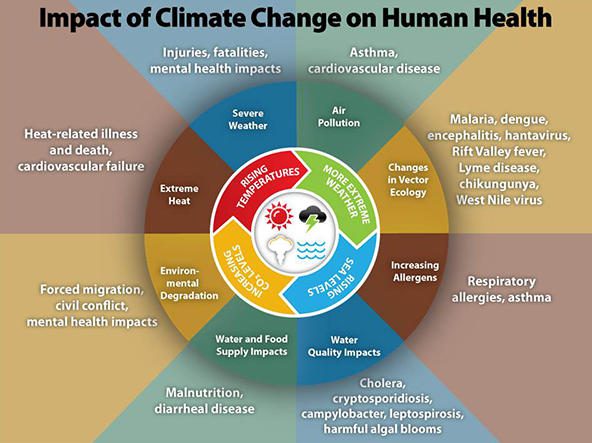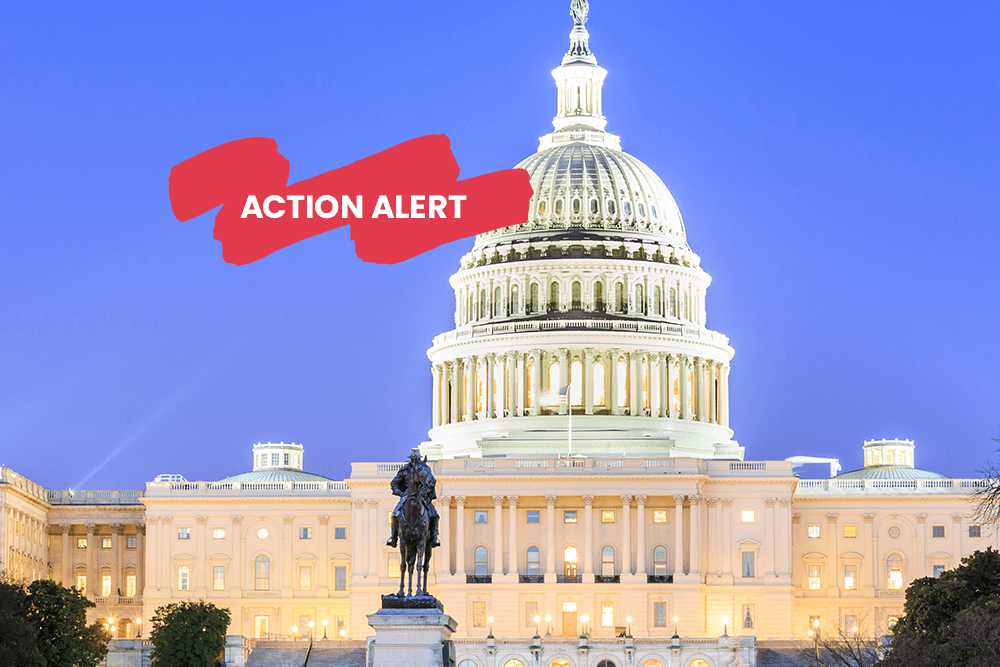Advocacy
Climate and Health
Climate change is a public health emergency. The U.S. Global Change Research Program confirms that climate change is a significant threat to public health.1
The science clearly shows that communities across the nation are experiencing the health impacts of climate change, including longer and more intense allergy seasons and increased asthma triggers.2,3,4 Warmer weather leads to shifting growing seasons that change flowering time and pollen development. Higher concentrations of pollen and longer growing seasons increase the exposure to allergens that trigger asthma and other respiratory and allergic responses.5
The evidence that human activity and expansion is the main cause of climate change is stronger than ever.

Human activities, such as the burning of fossil fuels like coal and oil, increase the amount of carbon dioxide that is emitted into the Earth’s atmosphere, thus changing the Earth’s natural atmospheric greenhouse.6 According to the Center for Disease Control (CDC), shown in the graphic above, climate change will affect air pollution, vector-borne diseases, allergens, water quality, water and food supply, environmental deterioration, extreme heat and severe weather. All of these changes are a serious threat to health.7
The United Nations Intergovernmental Panel on Climate Change (IPCC) regularly releases reports regarding the impact of climate change. The Global Warming 1.5 °C special report confirms that actions underway now will not be enough to protect against the ongoing and growing risk to public health: action is needed now to combat climate change.8 The IPCC also noted in its Climate Change 2021: The Physical Science Basis report that climate change is widespread, rapid and intensifying.9
Impact of Climate Change on People With Asthma
Between 1995 and 2011, warmer temperatures have caused the U.S. pollen season to increase around the country to be 11 to 27 days longer.7 Warmer temperatures from climate change cause flowers to bloom earlier and increase the amount of carbon dioxide emitted. These changes in temperatures cause an increase in the concentration of pollen in the air, the strength of airborne allergens and an increase in allergy symptoms. Exposure to stronger amounts of pollen and mold may make people that do not currently have allergies develop allergic symptoms.8 Climate change causes some allergen-producing plants to move into new areas, and winds can carry pollen and mold from outside the United States.8
People that live with asthma and allergies can do a few things to reduce risks and the impacts of climate change. The EPA suggests that to reduce the health risks caused by climate change, ask your doctor for advice on how to avoid places or situations that can cause an asthma attack or an allergic reaction. Also, before leaving your home, check the Air Quality Index (AQI), which shows how polluted the air is in your area. On days when the AQI is high, you should try to limit your outdoor activities.
For More Information
2021 Lancet Commission on Health and Climate Change Report
This report maps out the impacts of climate change, and the necessary policy responses, to ensure the highest achievable standards of health worldwide.
EPA’s Change Impacts and Risk Analysis (CIRA) project
This project estimates the physical and monetary benefits to the United States of reducing global greenhouse gas emissions. It’s 2015 report shows that global action on climate change will significantly benefit Americans by saving lives and avoiding costs.
National Institute on Environmental Health Sciences Climate Change and Human Health Program
This program lists the goals and actions to be taken to lessen climate change and protect public health.
The Fourth National Climate Assessment: Human Health
This chapter of the National Climate Assessment considers how health system responses could reduce the impacts of climate change on human health.
AAFA Climate-Related Reports
References
- S. Global Change Research Program. Fourth National Climate Assessment. November 2018. Available at https://www.globalchange.gov/nca4
- Wright, 2020. Influences of climate change on childhood asthma and allergy risk. Lancet Child Adolesc Health. 4(12):859-860.
- D’Amato et al, 2020. The effects of climate change on respiratory allergy and asthma induced by pollen and mold allergens. Allergy. 75(9):2219-2228.
- Ziska LH, et al. Temperature-related changes in airborne allergic pollen abundance and seasonality across the northern hemisphere: A retrospective data analysis. Lancet Planetary Health. 2019; 3(3):e124-e131. 10.1016/S2542-5196(19)30015-4.
- D’Amato, G, Chong-Neto, HJ, Monge Ortega, OP, et al. The effects of climate change on respiratory allergy and asthma induced by pollen and mold allergens. Allergy. 2020; 75: 2219– 2228. https://doi.org/10.1111/all.14476
- Environmental Protection Agency. Climate Change. http://www.epa.gov/climatechange/basics/
- Center for Disease Control. National Center for Environmental Health: Climate Effects on Health. 2014. http://www.cdc.gov/climateandhealth/effects/default.htm
- United Nations Intergovernmental Panel on Climate Change, Special Report on Global Warming of 1.5o C. 2018. Available at: https://www.ipcc.ch/sr15/
- AR6 Climate Change 2021:The Physical Science Basis, August 9, 2021, available at https://www.ipcc.ch/report/ar6/wg1/











